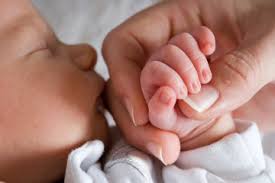Can all oviduct hydrops patients do IVF?
IVF technology is a complex and increasingly mature medical assisted pregnancy technology. In recent years, many infertile couples have asked to abandon other treatments and use IVF technology directly. (American Pregnancy Association has more details on What Is IVF)

However, from a medical point of view, reproduction is a natural physiological phenomenon. The closer to the natural way of conception, the better it is for mothers and babies.
IVF technology has a strong adaptability, but not everyone is suited for it, nor is it suitable for every infertile couple.
Strictly speaking, if the patient also has hydrosalpinx, the success rate of IVF is even lower.
Therefore, if a woman chooses to do IVF, the problem of fluids accumulation in the fallopian tube must be solved first. If the problem of hydrosalpinx is solved, natural pregnancy or IVF surgery can be selected.
What is the harm of hydrosalpinx?

The female fallopian tube is an important place for sperm-egg union, and it is also responsible for transporting the fertilized egg to the uterine cavity. Once the fallopian tube is diseased, it will have a great impact on the delivery process.
Hydrosalpinx is a common salpinx disease. The cause of hydrosalpinx formation is mainly related to the obstruction of the oviduct tube end. The effect of this disease on female pregnancy is very large. And if not treated in time, it can also cause diseases such as tubal blockage, fallopian tube dysfunction, fallopian tube adhesion, affecting women's chance of conception, and even lead to infertility.
When the hydrosalpinx occurs, the fertilized egg can not reach the uterine cavity smoothly, and it stays in the fallopian tube to continue to grow and develop, which forms an ectopic pregnancy. If it is not found timely or there is a delayed treatment, females will have a life-threatening worry.
Fallopian tube treatment:

1. Conservative treatment. When the amount of fluid in the fallopian tube is small, along with HSG evaluation, the conservative treatment is generally used. For example, the tubal adhesion is mild.
2. Salpingostomy: When there is a large amount of tubal effusion, and the proximal end of the fallopian tube is unobstructed while the distal end has effusion and atresia, we would suggest to do tube ostomy, the advantage is that the patient may also naturally conceive.
Why do we need ostomy?
When the fallopian tube is filled with fluids, most of the umbrella ends are closed together. The ostomy is to cut off the adhesion and restore the original umbrella-like structure, so that the accumulated fluids can be drained, which can release the toxins that affects the pelvic environment and oppresses the blood vessel of nutrition ovary.
For the situation that the tubal hydrosalpinx is mild and can not accept tubal ligation, patients should take the method of distal ostomy of the fallopian tube, the advantage is that the patient may also naturally conceive, the doctor may recommend artificial insemination 3 times, pregnancy rate 42%, or test pregnancy for half a year.
If you can't get pregnant, you have to take a test tube (pregnancy rate is 41.6%). The disadvantage is that the recurrence rate of the hydrosalpinx is high , and the possibility of ectopic pregnancy is increased (ectopic pregnancy rate is 3.9 %).
In order to prevent recurrence, you can take drug-assisted treatment after surgery, like Traditional Chinese medicine Fuyan Pill, natural and safe, no side effects at all.
Can B-ultrasound Detect the Obstruction of the Fallopian Tube?
previous pageFor 5 Symptoms of Tubal Blockage, 2 Treatments Recommended
next page- Herbal Treatment for Adenomyosis with Large Uterine Enlargement and Heavy Bleeding
- Effective Chinese Herbal Remedies for Adenomyosis Pain: End Your Period Discomfort
- Endometriosis and Debilitating Bowel & Bladder Pain: Diagnosis, Treatments, and Hope for Relief
- Severe Endometriosis Treatment: Chronic Pelvic Pain Relief and Infertility Solutions
- Revealed: Why Does Postcoital Bleeding Occur After a Mycoplasma Infection in Women, and How to Deal With It?
Testimonials
- Adenomyosis with Ureaplasma Urealyticum Cured by Fuyan Pill
- Tubal blockage with hydrosalpinx can be cured by TCM shortly
- Fuyan Pill Helps A woman with Adenomyosis Get Pregnant
- A Woman with Hydrosalpinx Is Cured with Fuyan pill
- Pelvic Inflammatory Disease Testimonials
- Irregular Vaginal Bleeding and Endometrial Thickening Cured by Fuyan Pill
- Pruritus Vulvae and Frequent Urination: Mycoplasma Infection Cured after 2 Courses



